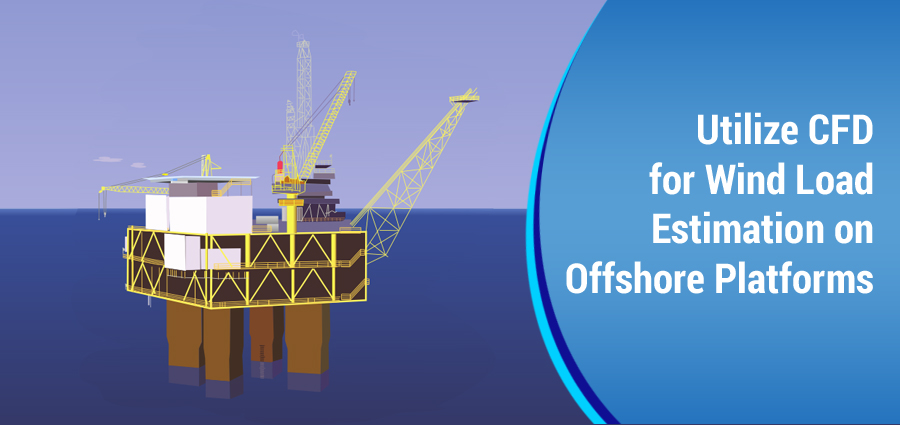Utilize CFD for Wind Load Estimation on Offshore Platforms
Posted by: Mehul Patel | Posted on: November 16th, 2016

Offshore platforms are designed considering the effects of wind loads on the structure, to ensure its safety and reliability. It is important to perform wind load estimation early during the design phase to avoid changes in the design later during the development stage.
Conventionally, wind load estimations are performed in a wind tunnel, but these tests can only be performed once the platform design has reached to a level that can be defined. Thus, there is only limited information available with the design engineer during initial stages.
Late changes in the configuration further introduce uncertainty as any change will affect the stability of the platform against wind loads. To assess wind loads efficiently both during early design and throughout development cycle, Computational Fluid Dynamics (CFD) is the right and cost-effective method. It provides the ability to assess design changes without the need of repeating the tests on wind tunnel and helps in taking key design decisions quickly.
CFD makes use of Navier-Stokes equations to solve the fluid flow problems, and is being widely used across diverse applications ranging from aircraft design, automobile and industrial equipment design.
While in early days, performing CFD simulations were computationally costly and time consuming. However, with recent advancements in high performance computing, CFD models can be processed and solved quickly.
Today, CFD is extensively used in oil & gas industry to evaluate the effects of wind loads and aerodynamic data which can be validated using wind tunnel tests. It is easy to recreate the wind tunnel environment virtually using CFD tools like ANSYS Fluent or ANSYS CFX.
The tool ensures both speed and flexibility in performing wind load estimations. It becomes easier for the design engineer to modify platform or equipment dimensions and location in the design phase itself and evaluate the effects quickly.
Moreover, CFD results can be utilized to perform additional study on improving the offshore platform design. Critical areas in the design subjected to excessive loads can be identified and improved using the results obtained through CFD simulation.
Computational Fluid Dynamics is a robust technology today and has turned itself into an integrated part of the product development processes. It indeed helps design engineers to develop safe offshore platform designs by predicting the performance right from the conceptual phases through final wind tunnel tests. CFD provides clear understanding on the effects of wind loads on different design choices and helps the designer to make informed design decisions quickly.
At Hi-Tech, we have developed immense experience in utilizing CFD to evaluate offshore platforms and support manufacturers in coming out with efficient and sustainable platform designs. Talk to our CFD specialists today. Send your details at info@hitechcfd.com or visit us at www.hitechcfd.com

About Author: Mehul Patel specializes in handling CFD projects for Automobile, Aerospace, Oil and Gas and building HVAC sectors. He works as a CFD consultant with Hi-Tech CFD for the past 5 years and has successfully executed numerous CFD projects of high complexities. He is an expert in turbo-machinery, gas dynamics, Combustion, Fluid Dynamics, multiphase flow analysis, computational fluid dynamics etc.
